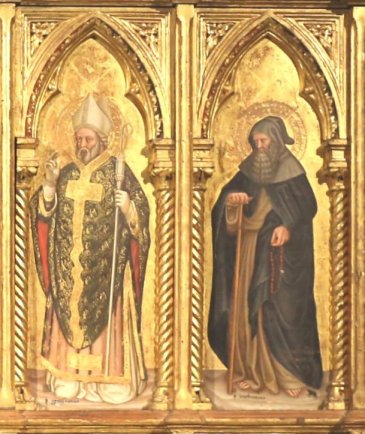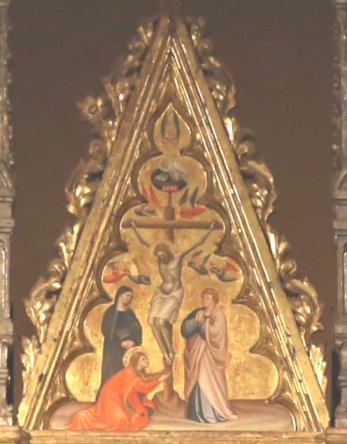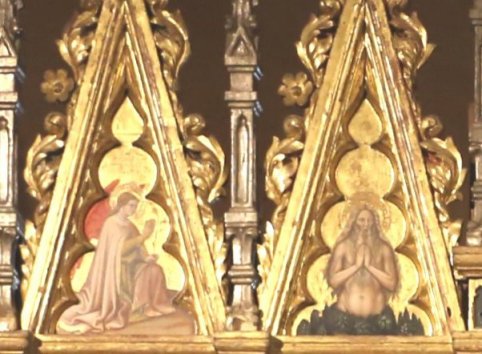A work of art by a little-known artist, Serafino de Serafini, (c1323 –
1393) spotted by us in the Duomo in Modena. Serafini is a painter born
in Modena; little of his work has survived. This polyptych shows the
Coronation of the Virgin surrounded by saints – but which saints are
they?
The work has not been highly regarded by art historians. One
nineteenth century critic declares that ‘His execution is rude, his
colour dull and flat and coldly shadowed’. On the other hand, Simon
Jenkins in Europe's 100 Best Cathedrals Calls it 'The most
sublime of Gothic works'. I will leave you to make up your mind!

The central panel showing the Coronation of the Virgin is straightforward. A rather plump Christ crowns the Virgin, with angels looking on from the background and the sides. A puzzling feature is the two kneeling figures in the foreground. Often in art such figures represent the donor or doners, but these two don't give that impression, and neither has a nimbus so they can't be saintly. Is one female and one male? Difficult to determine.

To the side of the Coronation are panels with early saints. On the right
they show St Christopher, easily identifiable as the young Christ sits
on his shoulder, and St Nicholas, shown here as the Bishop of Myra. To
the left are St Geminiano, a fourth century bishop of Modena, and St
Antonio Abate, also known as St Anthony Abbot, a fourth century hermit
revered as the saint of infectious skin diseases such as ergotism, known as St Anthony's fire.


The Crucifixion panel at the top is a familiar portayal: On either side of Christ are the Virgin Mary and St John: at his feet is St Mary Magdelene. Angels fly overhead. At the very top is what looks like a figure, but it's hard to make it out. An image of God?

The four panels above the Coronation require some thought. The outside panels show the Annunciation. The inner panels show saints, but who are they? The right-hand panel, next to the Virgin Mary, shows St Catherine, identifiable by her wheel. The left-hand panel is more problematic. The appearance suggests a hermit, such as the third/fourth century Paul the Hermit, known as the First Hermit.


The predella shows all twelve apostles. I won't attempt to identify them, though the image of the younger speaking one suggests John.

The altarpiece is mounted on a carved altar that dates from before the present cathedral was built, tenth century or earlier. It has some very lively animal scenes.
